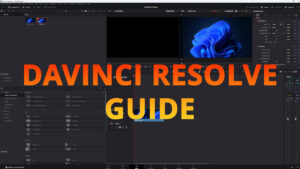DaVinci Resolve, the powerful video editing suite, offers a myriad of customization options to enhance your video editing experience. One such feature is the Playhead Shadow, a visual aid that helps in precise editing by casting a shadow around the playhead, making it more visible against the timeline. Whether you prefer a clean timeline with minimal distractions or need the added visibility of the playhead shadow, toggling this feature is simple. Follow this step-by-step guide to show or hide the playhead shadow in DaVinci Resolve.
- Launch DaVinci Resolve: Open the DaVinci Resolve application on your computer.
- Access Preferences: Click on ‘DaVinci Resolve’ in the top left corner of the menu bar to open the dropdown menu. From the list of options, select ‘Preferences’ to open the system preferences window.
- Navigate to User Preferences: Within the Preferences window, you’ll find several tabs categorizing different settings. Click on the ‘User’ tab to access user-specific preferences.
- Open UI Settings: Under the User preferences, locate and click on ‘UI Settings’. This section contains settings related to the user interface of DaVinci Resolve.
- Adjust Playhead Shadow Option: In the UI Settings, scroll through the options until you find ‘Show Playhead Shadow’. Here, you can toggle the playhead shadow to your preference:
- Off: Select this option if you prefer a cleaner timeline without the playhead shadow. This setting might be useful if you find the shadow distracting or if you’re working on a project where precision is less of a concern.
- On: Choose this option to enable the playhead shadow. This is particularly helpful for precise editing tasks, as the shadow makes the playhead more prominent against the timeline.
Customizing your workspace in DaVinci Resolve can significantly improve your editing efficiency and comfort. By following these simple steps, you can easily toggle the Playhead Shadow feature according to your editing needs. Whether you’re a professional colorist, a budding editor, or somewhere in between, understanding how to tailor the software to your workflow is key to a smooth editing experience.

